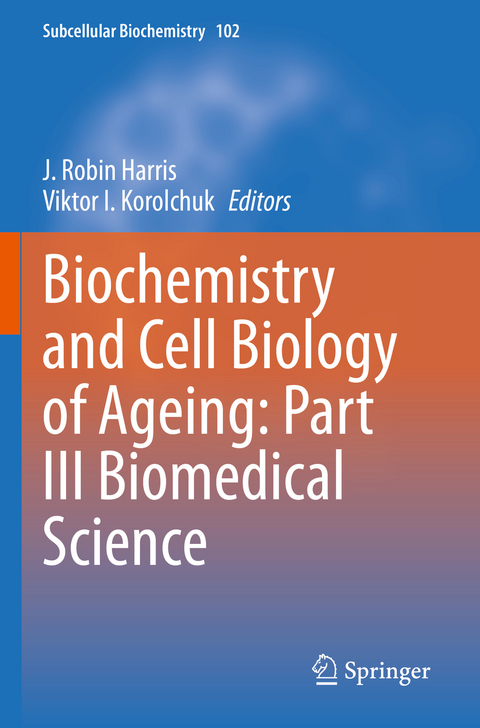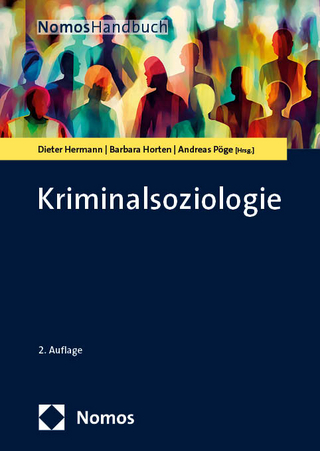
Biochemistry and Cell Biology of Ageing: Part III Biomedical Science
Springer International Publishing (Verlag)
978-3-031-21412-7 (ISBN)
This book provides a state-of-the-art overview of key areas of subcellular aging research in human cells.
The reader is introduced to the historical development and progress in biomedical aging research and learns, for example, about the role of microRNAs, circRNAs, mitochondria and extracellular vesicles in cellular senescence. The reader will also learn more about how gap junctions, the nuclear pore complex and the proteasome are affecting the ageing processes. In addition, novel therapeutic opportunities through modulation of cellular senescence are discussed.
The book follows on from Parts I and II of Biochemistry and Cell Biology of Ageing (Volumes 90 and 91 of the Subcellular Biochemistry book series) by covering interesting and significant biomedical ageing topics not included in the earlier volumes. Comprehensive and cutting-edge, this book is a valuable resource for experienced researchers and early career scientist alike, who are interested in learning more about the fascinating and challenging question of why and how our cells age.
Prof J. Robin Harris is an Honorary Professor of the University of Mainz, who specialized in macromolecular electron microscopy. He has been the Series Editor of the Subcellular Biochemistry Series for many years and his broad scientific interests are reflected in the diversity of content of the Series.
Dr Viktor Korolchuk is Reader in Molecular Cell Biology at Newcastle University. His scientific interests lie in the area of intracellular protein trafficking and degradation pathways. The current focus of research in his laboratory is autophagy (literally self-eating) where portions of cytoplasm are recruited into intracellular vesicles called autophagosomes and transported for degradation by lysosomal hydrolases.Chapter 1: Introduction: Progression of the Science of Ageing.- Chapter 2: Chromatin structure from development to ageing.- Chapter 3: The nuclear envelope in ageing and progeria.- Chapter 4: Mitochondrial DNA mutations and ageing.- Chapter 5: The Proteasome and Ageing.- Chapter 6: Gap junctions and Ageing.- Chapter 7: Cellular senescence and ageing.- Chapter 8: Therapeutic opportunities presented by modulation of cellular senescence.- Chapter 9: Ageing at Molecular Level: Role of MicroRNAs.- Chapter 10: CircRNAandAgeing.- Chapter 11: Extracellular vesicles and cellular ageing.- Chapter 12: Fibrinogen, Coagulation and Ageing.- Chapter 13: An Insight intoPlateletsat Older Age:Cellular and Clinical Perspectives.- Chapter 14: Ageing skeletal muscle: The ubiquitous muscle stem cell.- Chapter 15: Age-related changes in central nervous system 5-hydroxytryptamine signalling and its potential effects on the regulation of lifespan.- Chapter 16: Systems Biology of Ageing.
| Erscheinungsdatum | 09.01.2024 |
|---|---|
| Reihe/Serie | Subcellular Biochemistry |
| Zusatzinfo | IX, 424 p. 1 illus. |
| Verlagsort | Cham |
| Sprache | englisch |
| Maße | 155 x 235 mm |
| Gewicht | 614 g |
| Themenwelt | Naturwissenschaften ► Biologie |
| Sozialwissenschaften ► Soziologie ► Spezielle Soziologien | |
| Schlagworte | aging • biochemistry • Cell Biology • Cellular senescence • Fibrinogen • mitochondria • Proteasome • ROS • Serotonergic signaling • systems biology |
| ISBN-10 | 3-031-21412-9 / 3031214129 |
| ISBN-13 | 978-3-031-21412-7 / 9783031214127 |
| Zustand | Neuware |
| Informationen gemäß Produktsicherheitsverordnung (GPSR) | |
| Haben Sie eine Frage zum Produkt? |
aus dem Bereich


